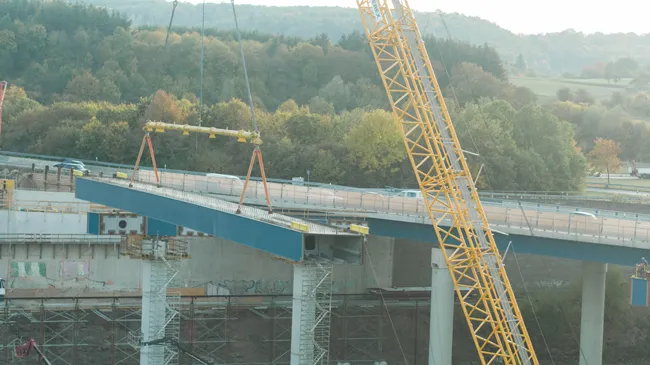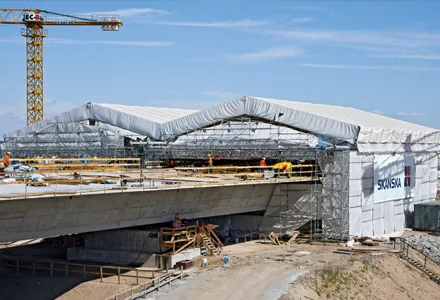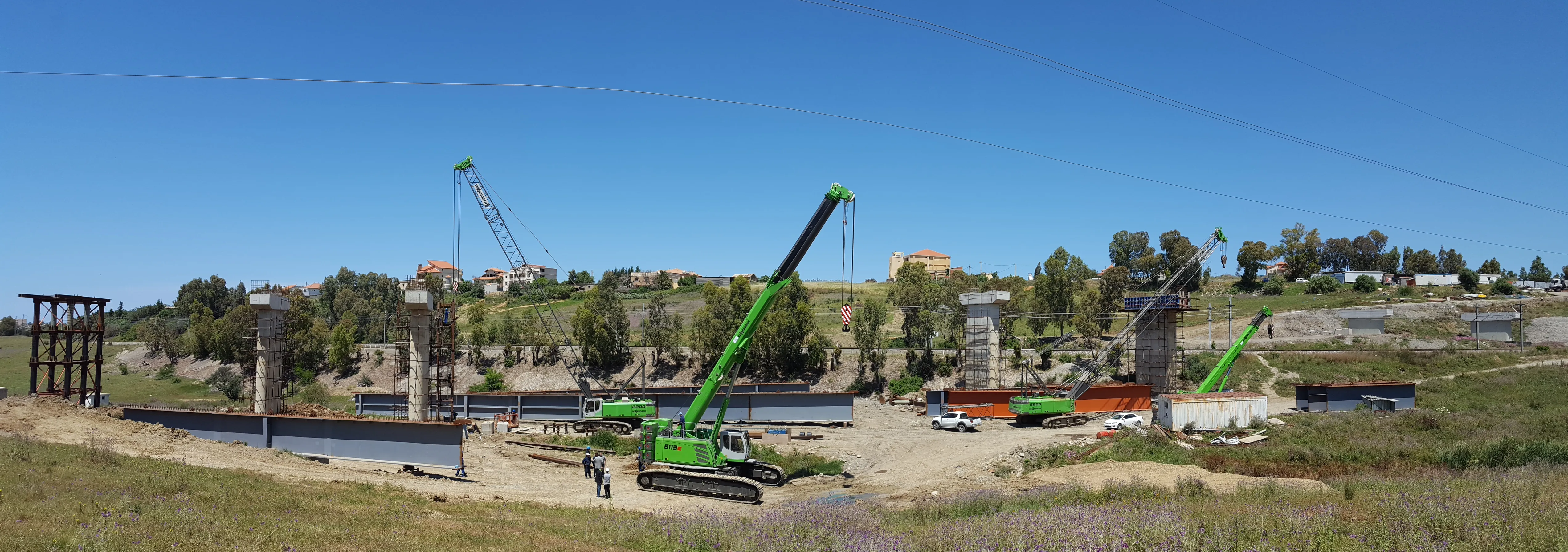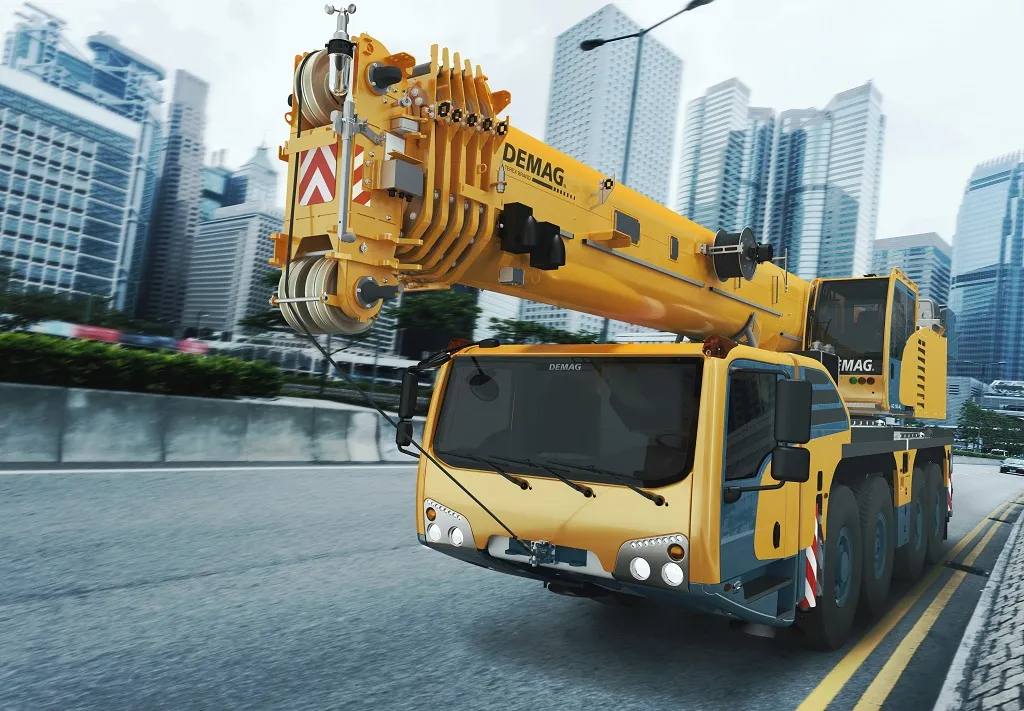
The jobsite was the replacement of the old viaduct on the A45 Freeway that spans the Lahn River near Dorlar in Germany. Bietigheim-Bissingen-based crane service provider Wiesbauer solved the site’s space issues by using a Demag CC 3800-1.
“This site required us to lift loads of 96-148tonnes at radii of 40-64m, so there was no option but to use a crawler crane in the 650tonne class despite the constrained space conditions,” said Marco Wilhelm, Wiesbauer project manager.
The company decided on the Demag CC 3800-1 lattice boom crawler crane, which was assisted by an AC 160-5 all-terrain crane - both from the manufacturer
“The Lahn flows right along the work site, so the ground wouldn’t have been able to bear the heavy load exerted by our machine. That’s why the work area was prepared with a concrete foundation for the crane,” Wilhelm explained.
This made it possible to safely set up the crane with an LSL 1 configuration featuring an 84m main boom, 36m Superlift boom, 50tonne central ballast and 225tonne counterweight, with the counterweight in particular being absolutely crucial.
“The extremely heavy counterweight enabled us to set up the main boom without an additional Superlift counterweight. Moreover, this was what made it possible to use the enormous crawler crane to pick up the loads at such a tight work site, as leaving out the Superlift counterweight actually increased the crane’s usable working area significantly,” he said.
In fact, the Superlift counterweight was not needed until later during the lift.
Once the preparation work was done, the Wiesbauer team was ready to carry out all the lifts with the Demag CC 3800-1. To build the two bridge sections, it was necessary to perform the work in two steps at two different work areas. The steel components had to be lifted over the Lahn river in one step and over a parallel rail line in the other.
In each step of the project, one steel cross beam and four longitudinal steel girders had to be put into position. All these lifts followed the same pattern. Due to the space limitations, the Demag CC 3800-1 crane picked up the steel beams – which were up to 54m long and weighed 96-148tonnes – from the SPMT units without a Superlift counterweight.
The crane then slew to a pick-up point to attach the ready-to-go Superlift counterweight frame and its counterweight of 32tonnes to the Demag CC 3800-1 so that the latter would be able to work in bigger radii and, lift the beams to a height of around 22m and then set them down at the intended bridge points. The radii ranged from 40-64m. Due to their length, the beams were rigged to 20m- and 25m-long spreader beams to achieve the required precision for the lifts.
One of the priorities during the project was to minimise its impact on rail traffic, which is why the Wiesbauer team had to perform most of the lifts at night within very tightly defined time when there was no rail traffic. Despite these tight time windows and space conditions, the work was done in five weeks – and all of it including setup, lifting, disassembly, and then moving the crane to the other work area, including the corresponding setup and disassembly after lifting the last steel beam.
Also, outstanding weather conditions worked in the team’s favour, said Wilhelm.









